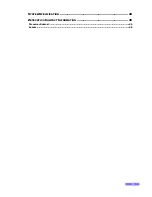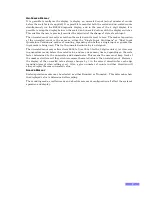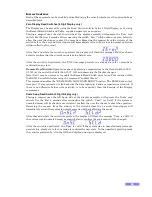
11
Method 1 – Calculating calibration scale factors
Calibrating a system with a known number of sensor targets and gearbox ratio:
1.
Determine if 1 (Single input) or 2 (Quadrature) sensors will be used.
2.
Determine the display precision required (number of decimal places).
3.
Determine the number of sensor targets per rotation / unit length
[A]
.
4.
Determine the gearbox ratio (eg 5 to 1 for 5 revolutions in to get 1 revolution out, or 1 to 1
for no gearbox
[B to C]
.
5.
Calculate the numerator and denominator as follows
If single input
D
= 1
If quadrature input
D
= 4
because there are 4 changes of state from the 2 sensors
for each target
Numerator
=
C
Denominator
=
A x D x B
6.
Correct for any decimal in denominator (multiply top and bottom by the same multiple of
10)
7.
Format Numerator (add sign, decimal point and leading zeros as required) and
Denominator (add leading zeros as required).
8.
Connect the system to a PC as described in the section on the
Command Console
Interface
on page 27. Enter the numerator and denominator using the commands:
PNUM??????
PDEN????
9.
Check the calibration using the
Calibration Check Procedure
on page 15.
e.g.[1]
The following is a simple example
1.
QUADRATURE input
2.
2 decimal place
3.
A = 16
targets per rotation
4.
Gearbox None
B = 1
C = 1
5.
D = 4
Numerator = 1
Denominator = 16 x 4 x 1 = 64
6.
There is no need to multiply both by a multiple of 10 to eliminate decimal in
denominator
7.
Format
Numerator = +01.00
Denominator = 0064
8.
Program scale factors
PNUM+01.00
PDEN0064
9.
Check the calibration using the
Calibration Check Procedure
on page 15.






























